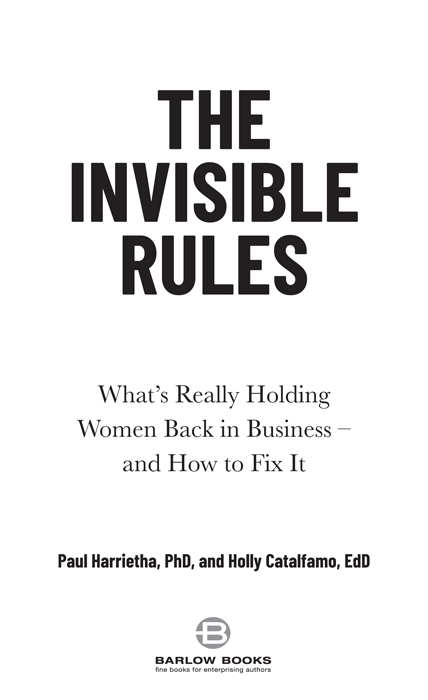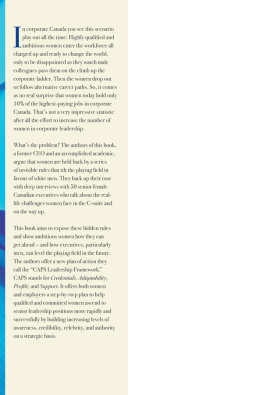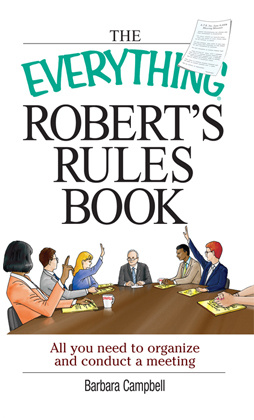Paul Harrietha - The Invisible Rules: What’s Really Holding Women Back in Business – and How to Fix It
Here you can read online Paul Harrietha - The Invisible Rules: What’s Really Holding Women Back in Business – and How to Fix It full text of the book (entire story) in english for free. Download pdf and epub, get meaning, cover and reviews about this ebook. publisher: Barlow Book Publishing Inc., genre: Business. Description of the work, (preface) as well as reviews are available. Best literature library LitArk.com created for fans of good reading and offers a wide selection of genres:
Romance novel
Science fiction
Adventure
Detective
Science
History
Home and family
Prose
Art
Politics
Computer
Non-fiction
Religion
Business
Children
Humor
Choose a favorite category and find really read worthwhile books. Enjoy immersion in the world of imagination, feel the emotions of the characters or learn something new for yourself, make an fascinating discovery.
- Book:The Invisible Rules: What’s Really Holding Women Back in Business – and How to Fix It
- Author:
- Publisher:Barlow Book Publishing Inc.
- Genre:
- Rating:5 / 5
- Favourites:Add to favourites
- Your mark:
- 100
- 1
- 2
- 3
- 4
- 5
The Invisible Rules: What’s Really Holding Women Back in Business – and How to Fix It: summary, description and annotation
We offer to read an annotation, description, summary or preface (depends on what the author of the book "The Invisible Rules: What’s Really Holding Women Back in Business – and How to Fix It" wrote himself). If you haven't found the necessary information about the book — write in the comments, we will try to find it.
Paul Harrietha: author's other books
Who wrote The Invisible Rules: What’s Really Holding Women Back in Business – and How to Fix It? Find out the surname, the name of the author of the book and a list of all author's works by series.
The Invisible Rules: What’s Really Holding Women Back in Business – and How to Fix It — read online for free the complete book (whole text) full work
Below is the text of the book, divided by pages. System saving the place of the last page read, allows you to conveniently read the book "The Invisible Rules: What’s Really Holding Women Back in Business – and How to Fix It" online for free, without having to search again every time where you left off. Put a bookmark, and you can go to the page where you finished reading at any time.
Font size:
Interval:
Bookmark:



Copyright Paul Harrietha, 2021
All rights reserved. No part of this publication may be reproduced, stored in a retrieval system or transmitted, in any form or by any means, without prior written consent of the publisher.
Library and Archives Canada Cataloguing in Publication data available upon request.
978-1-988025-60-5 (hardcover)
Printed in Canada
Publisher: Sarah Scott
Book producer: Tracy Bordian/At Large Editorial Services
Cover design: Paul Hodgson
Interior design and layout: Paul Dotey
Copy editing: Eleanor Gasparik
Proofreader: Marilyn Dean
For more information, visit www.barlowbooks.com
![]()
Barlow Book Publishing Inc.
96 Elm Avenue, Toronto, ON
Canada M4W 1P2
For all of the remarkable women who have made
gender equity in the workplace a priority and the future leaders
who will make it a reality
A Note to Readers
This book began life as a robust academic exercise designed to explore gender equity in corporate Canada through the lens of senior female executives. The content, quotes, and anecdotes are based on formal interviews with more than fifty senior female executives from across the country, thirteen of whom self-identified as diverse or intersectional (that is, something other than white and straight).
Attributed direct quotes appear throughout the chapters as block quotes. To capture the candid quality of the analysis while protecting the identities and interests of our interviewees we have also included a significant number of unattributed direct quotes. Some appear in block quotes and some in the body of the text in italics, like this one: I dont want to suggest that there arent a lot of super-competent men out there, but I think there are a lot fewer super-competent men than super-competent women. In combination, these are the voices of our remarkable leaders.
Happy reading.
ONE
Introduction
Like most women of my generation, I came of age in
an environment where business culture collided with
womens personal realities and socialization. Although we
women had no choice but to bring our whole selves to the
workplace every day, the only part of us accepted in the
corporate leadership world was a traditional male facade.
Attempting to compartmentalize our divergent lives
created such personal discord that many talented women
were forced to walk away. They could not be honest
or authentic leaders.
Colleen Moorehead, chief client officer at
Osler, Hoskin & Harcourt; co-founder and former president
of E*TRADE Canada; and co-founder of the Judy Project
Like it or not, there are two sets of rules that govern employment practices in corporate Canada. One set for men and one set for women. One set that continues to preserve a long-standing male power structure by assuring that a disproportionate number of men achieve senior leadership status (and the big paycheques that go with those positions). And a second set of powerful, deeply rooted, and largely imperceptible rules that make the pursuit of senior leadership far more demanding and uncertain for aspiring woman. Men get to be men. In a form of corporate Darwinism, women must adapt or die from a career perspective.
While we might not be aware of these invisible rules, their devastating impact remains pretty obvious. We see highly qualified and ambitious women enter the workforce all charged up and ready to change the world, only to be disappointed as they watch male colleagues pass them on the climb up the corporate ladder. And we see these frustrated women abandon traditional workplace pipelines in droves to start small businesses, join early-stage companies, lead not-for-profits, or leave the workforce altogether. Little wonder that women hold only about ten per cent of the highest-paying jobs at Canadas largest publicly traded companies (Rosenzweig, 2019).
Despite the honourable efforts of strong advocates, allies, and supporting organizations, the pursuit of gender equity in Canada has moved at a glacial pace. Sure, weve seen lots of positive change over the past fifty years. But we still have a very long way to go. By any reasonable measure, women remain dramatically under-represented at senior leadership levels in Canada. This inequity is tough on women. And as Canadian business icon Annette Verschuren, chair and CEO of NRStor Inc. and former president of both Home Depot Canada and Michaels of Canada Inc., confirms, this lack of equity impedes corporate Canadas ability to compete head-to-head with progressive economies worldwide:
Gender equity is a fundamental business issue. We need to understand that diversity of thought is no longer a luxury for organizations who want to compete internationally or globally. To ensure success, organizations must adjust to the needs and perspectives of the women and other diverse candidates who will ultimately drive their success.
Its hard to lead the way when you systematically marginalize fifty per cent of your best talent.
We hope to change that. This book exposes the invisible rules and makes it easier for women to get ahead. More to the point, it will help senior leaders and senior male leaders, in particular better understand the negative impact that their attitudes and actions continue to have on so many talented and ambitious women. Unintentional, perhaps, but undeniable and increasingly indefensible. Lets face it, gender equity isnt a womens problem or issue. If women alone could fix it, they would have done so a long time ago. This is a business problem and opportunity that men and women can and must tackle together. And were going to tell you how to do it.
The Motivation
So, why is a fifty-something, white, male ex-CEO interested in gender equity? And why now?
Pauls passion for gender equity was sparked by the real-life work experiences of his wife, Mary Cover, a highly accomplished professional and senior executive. Today, Mary is the managing director, pension strategy & enterprise risk, at the Ontario Teachers Pension Plan (OTPP). Its a big job and a testament to her skills and grit. But it wasnt necessarily an easy or rapid climb, largely because of the invisible rules that impact so many aspiring female leaders.
About ten years ago, Mary found herself stalled albeit temporarily just below the executive ranks of her employer at the time (not OTPP), despite consistently superior performance reviews and promises of future advancement. Like so many of her female friends and colleagues, she watched as male peers (less qualified and younger, in many instances) were promoted to senior leadership roles. Fortunately, that all changed. By systematically adopting the key strategies outlined in this book, Mary was soon promoted to a senior executive position with national responsibilities. Its a good-news story that, simply put, took more time, effort, and emotional energy than it should have and undoubtedly would have had Mary been a man.
It will come as no real surprise that many ambitious women feel frustrated, patronized, and, truth be told, more than a little pissed off at what they see to be unfair (and certainly inequitable) treatment. They are particularly frustrated by what they see to be a blatant double standard that unduly rewards a traditionally male tendency to self-promote, even when that self-promotion is unwarranted. The overwhelming perception among these women is that people, regardless of gender, should be promoted to senior levels based solely on the quality of their work and contribution to business outcomes and that participating in any form of workplace politics is both distasteful and inauthentic. Performance over politics. Merit over gamesmanship.
Font size:
Interval:
Bookmark:
Similar books «The Invisible Rules: What’s Really Holding Women Back in Business – and How to Fix It»
Look at similar books to The Invisible Rules: What’s Really Holding Women Back in Business – and How to Fix It. We have selected literature similar in name and meaning in the hope of providing readers with more options to find new, interesting, not yet read works.
Discussion, reviews of the book The Invisible Rules: What’s Really Holding Women Back in Business – and How to Fix It and just readers' own opinions. Leave your comments, write what you think about the work, its meaning or the main characters. Specify what exactly you liked and what you didn't like, and why you think so.









